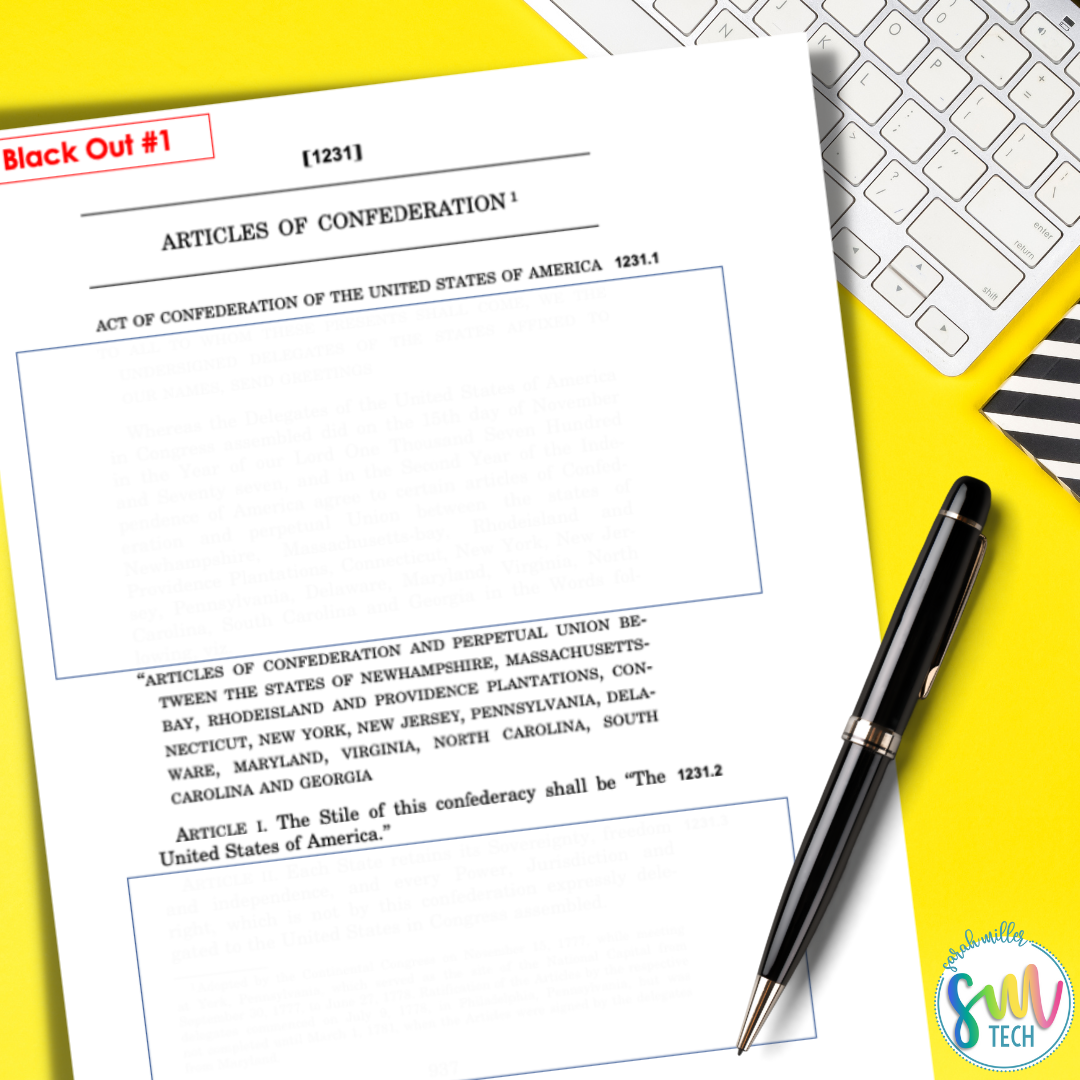Teaching the Articles of Confederation: A Primary Source Activity
Teaching the Articles of Confederation can be tricky. First, the Articles are very difficult to read and understand - even for us, teachers! Additionally, we want our middle schoolers to be somewhat engaged and challenged. I’ve got a primary source activity that I think your middle school students will like, and I’m giving it to you for FREE. Plus, I’ll walk you through it - just keep reading!
Background Knowledge
For these activities to be most effective, it’s important to provide students with some background knowledge. They’ll need to know that The Constitution wasn’t the “first” and “only” Constitution of the United States. The Articles of Confederation were written before the Constitution and had a lot of flaws. The writers of the Articles of Confederation were adamant that their new government would not become too powerful. Their recent experience with Britain heavily influenced the writers of the Articles. A common theme of “fear of a strong central government” and “abuse of power” is seen throughout the Articles. Connecting this to their recent experience with Britain is important in understanding the weaknesses of the Articles of Confederation.
Primary Source Activity: Black Out
Teaching the Articles of Confederation is a great opportunity to use a primary source strategy. However, having students read the Articles in its entirety is not recommended. I think they’ll be more confused if they read the whole thing because of how it’s written. I recommend the primary source strategy called, “black out”.
In this strategy, teachers cover or “black out” portions of the text or image and ask students to draw conclusions based on the uncovered or visible pieces. The teacher can uncover and ask students to respond. Sometimes, teachers won’t uncover the piece - they’ll just have students work with the visible portion.
I have an activity that uses both strategies. “Black Out #1” covers one portion and does not reveal any additional text. “Black Out #2” covers one portion, then uncovers to ask students to respond to the new text.
The best approach to any primary source activity is to provide specific questions/prompts. Have students make predictions, observations, and draw conclusions from the primary source. The prompts to do this will vary depending on the primary source.
In my example, I used the first page of the Articles of Confederation, including Article 1. The goal is to have students predict what the Articles of Confederation is about, when was it written, and what was its intended purpose.
In my second Black Out activity, students see a portion of Article VIII (about taxes). Students are asked to make predictions about the Article and answer other questions. Then, more of Article VIII is revealed. This additional information answers a question asked previously. The way the first portion is written leads the reader to think that general welfare expenses will be paid by a national treasury. However, the second portion clarifies that these taxes are actually levied and submitted by the states with no federal regulation. Once this is made clear, we can examine a weakness of Article VIII.
Matching Activity
Another activity I recommend for teaching the Articles of Confederation is to match the actual words of the Articles to a rephrased version (common language). This will help students to understand and comprehend the Articles.
Analyze the Weakness and the Purpose
Identifying the purpose for certain Articles will help to drive the point that the writers’ experience with Britain influenced a fear of an abuse of power by the government. Have students think about why the writers chose to include these Articles.
Then, have students analyze the potential weaknesses of these Articles. This should lead students to the theme that the government was not strong enough to effectively run a nation.
Illustration Activity
A fun extension activity for teaching the Articles of Confederation is to illustrate the different Articles. This can be a summarizer, a fast-finisher activity, or for extra credit.
This should help you see that the student understands the Article. You can also have students add a description of a potential weakness to the illustration, so you can assess that aspect, too.
In Closing…
Teaching the Articles of Confederation doesn’t have to be complicated. The Articles themselves are already complicated enough! Try using a primary source strategy, like the Black Out strategy, to engage your students. Let them connect with the text with these strategies.
For more primary source strategies, check out this blog post.
FREE Resource
Grab this ENTIRE activity for free! This includes both Black Outs, matching, and illustration activities.








